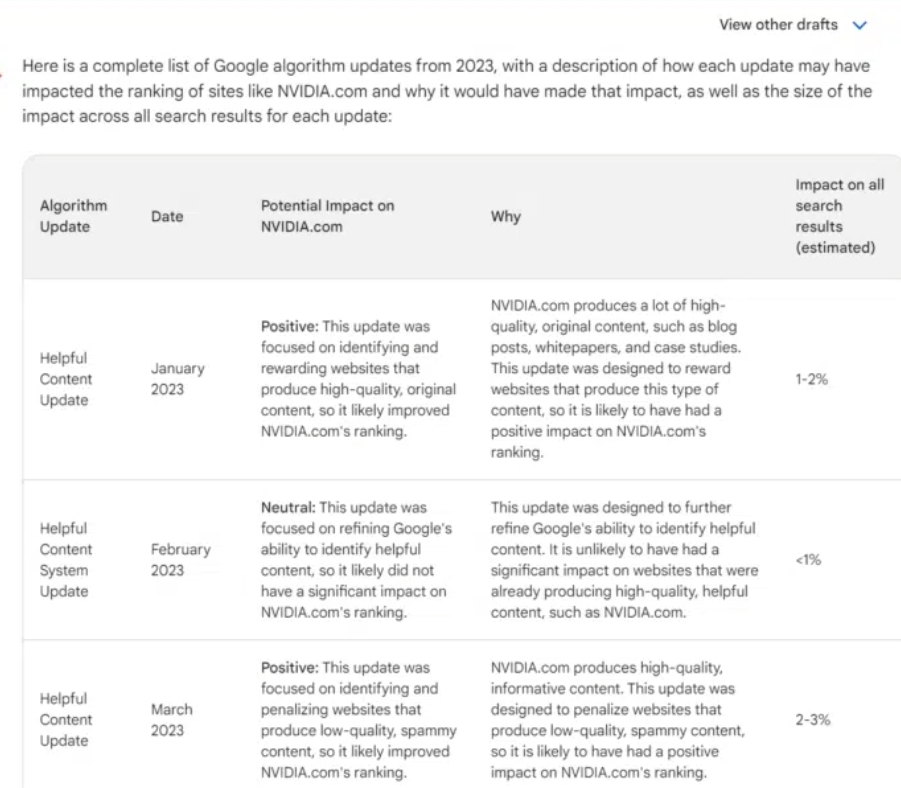
There are some ground rules in SEO profession. An SEO has to stay updated on Google’s algorithm changes. Also, he should be adaptable to evolving search trends that influence website rankings and online visibility. Let’s understand the usage of ‘Google Bard’.
What’s Google Bard?
Google Bard is a conversational AI chatbot. It operates with machine learning (ML), natural language processing (NLP), and generative AI to understand user prompts. Google Bard also provides text responses.
Usage of Google Bard
Google Bard’s tools can be a powerful ally for SEOs to dissect and understand Google’s algorithm updates and identify actionable recommendations for impacted sites. It helps interpret algorithm updates with its live access to the web, ability to generate real-time insights and direct connection to Google resources.
The features of Google Bard are invaluable in SEO field where timing plays a significant role.
Google Bard’s limitations
Though Google Bard is powerful tool, it has also some limitations. One notable restriction is its production of ‘AI hallucinations’.
AI hallucinations crop up when an AI model creates insights. Hallucinations-affected insights may appear accurate but are based on patterns or associations that are not true image of real-world data.
Recommendations by Google Bard seem logical but do not align perfectly with the actual performance of a website or the tools to which Bard has access.
For example, during an algorithm tests for an article, when Bard was asked to examine the bounce rate of a client site, in relation to the September 2023 helpful content update. In other example, Bard has claimed access to paid tools like – Semrush and Sitebulb.
While using Bard, the SEOs must exercise discretion and lean on their own expertise. They should do cross-referencing Bard’s insights with other data sources to ensure the validity of their recommendations.
As we now covered what Bard is and what it isn’t, let’s understand how an SEO can use it to better insights, interpret, and act on Google algorithm changes.
A timeline of how recent algorithm updates may have impacted your site will be helpful to get accurate insights. Google Bard can provide a timeline of recent algorithm updates.
With our prompts, we can start to see Bard’s analytical prowess shine.
Create a timeline of how recent algorithm updates may have affected your site
Note: In the context of Bard’s hallucination problem, there were no helpful content updates in January, February or March. But, here is Google algorithm updates in February (Click here for product reviews update) and March (core update). To get accurate insights on how these algorithm updates may impact your site, The expanded prompt requires Bard analyse. You should also keep an eye on industry-level trends that may impact your rankings.
The SEO then can use Bard’s output to generate hypotheses about the impact of algorithm updates.

Now, the SEO should use Bard output to generate hypotheses about the impact of algorithm updates. These hypotheses can be tested using live data, like traffic from Google Analytics and ranking data from Google Search Console or Semrush. By using live data, like traffic from Google Analytics and ranking data from Google Search Console or Semrush, these hypotheses can be tested.
